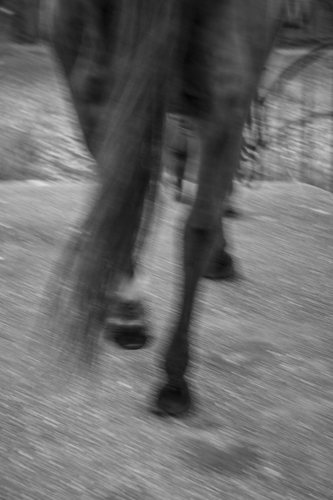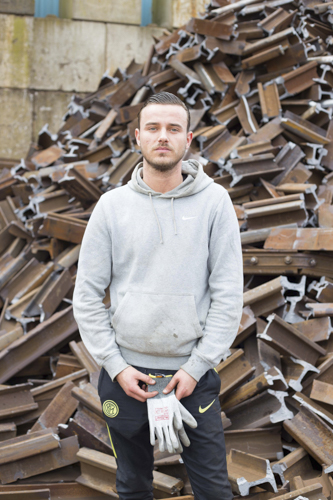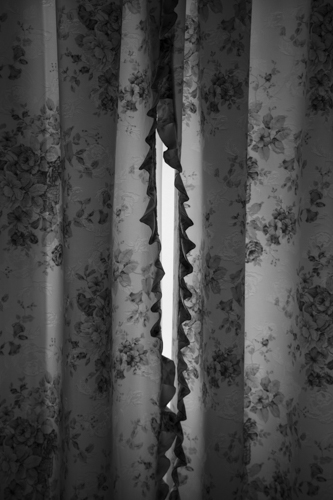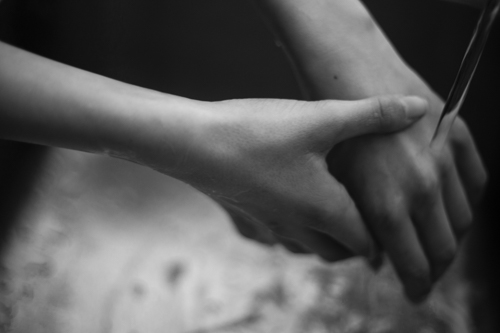Lillianne Kuijt
Royal Academy of Art Graduation 2020
x
Portfolio
Project description
The Blue Ray
Growing up with the rare disease EPP
When spring comes, we go outside. The sun is a source of joy for a lot of people but not for Yazz (13). She is forced to stay in the darkness otherwise the sun will cause her excruciating pain. She is diagnosed with a rare disease Erythropoëtische protoporfyrie (EPP). Consequently, due to the limitations of the disease, her life is not as carefree as it should be at her age. Essentially, it is a disruptive disease, a disease that literally and figuratively leaves scars. It deeply affects her life, she always has to arm herself against the sun with protective clothes while dealing with the feeling of shame. This unusual story is about her, growing up with a rare disease in a society that is designed for a life in daylight.
Project key images



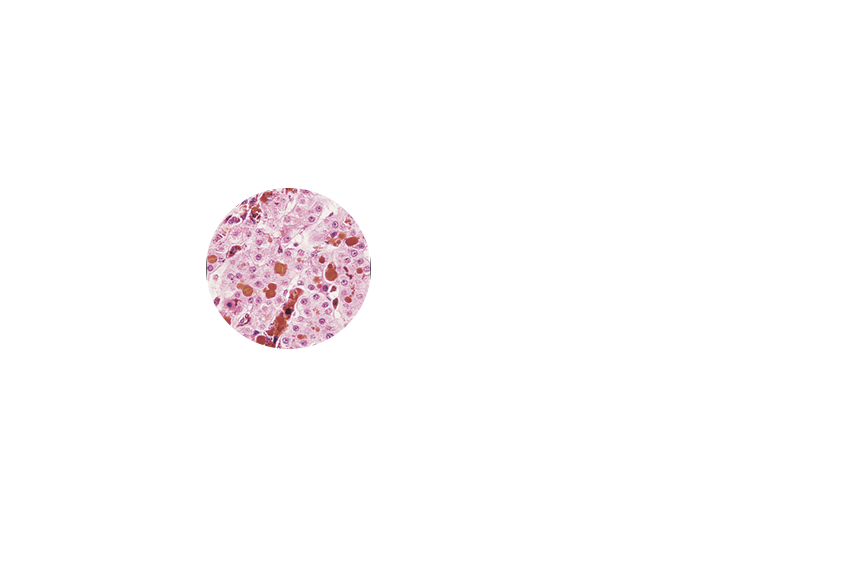
x
Digital Exhibition The Blue Ray
Physical exhibition
Draft Graduation Show at the Royal Academy of Art , The Hague 10-13 September 2020

Trailer The Blue Ray


x
Context publication essay
When spring comes, we go outside. The sun is a source of joy for a lot of people but not for Yazz (13). She is forced to stay in the darkness otherwise she will get hurt. She is diagnosed with a rare disease Erythropoëtische protoporfyrie (EPP). Consequently, her life is not as carefree as it should be at her age. Essentially, it is a disruptive disease, a disease that literally and figuratively leaves scars. It deeply affects her life. She always has to arm herself against the sun and environment, with protective clothes while dealing with the feeling of shame. This unusual story is about her transition from a girl into a woman while growing up with a rare disease in a society that is designed for a life in daylight
EPP is one of a group of disorders known as the Porphyrias. All the versions of porphyria have one thing in common: they each result from faults in the body’s heme-building machinery. Heme, a component of the oxygen transporter hemoglobin, is made in a sequence of eight steps, as in a factory assembly line. Each step is catalyzed by a separate enzyme. If any of these eight steps fails because of an inherited genetic mutation or an environmental toxin, then the whole assembly line gets jammed. The products of the earlier steps, porphyrin intermediates, may build up to toxic levels. These porphyrins accumulate in the skin and other organs before being excreted in feces and urine which may turn a port-wine color as soon as it comes in contact with light. Once exposed to light, the porphyrins can turn causticand destroy surrounding tissue. Characteristic of Porphyria is that the urine turns wine red as soon as it comes into contact with daylight, this is where the name Porphyria comes from, from the Greek porphuros which means purple.There are approximately 300 people with EPP in the Netherlands and 5000-10.000 people worldwide, so it is extremely rare.
There are people with EPP who can barely stand in the sun for minutes and also cannot endure artificial light. They are forced to spend their lives indoors without any light.Yazz has a mild form of porphyria EPP, which is a hereditary variant that is passed on genetically but does not have to cause complaints for everyone. Yazz is the only one in her family. She is extremely hypersensitive to the visible light of the sun, specially the blue ray of the color spectrum, not to be confused with UV. Spring is the worst time with the most complaints. Then why is it worse than in summer? They don’t know that yet. It could have to do with the fact that the sun is low, so that the beam of blue light is quite wide. Another explanation is that it is the first rays of light of the year and the skin is not yet used to it. Even in summer, EPP patients cannot be exposed to direct sunlight. The blue light causes the complaints. In the summer there is more sun and the light is brighter, but the sun comes from above and does not shine upon the face. The beam of blue light is also narrower. Surprisingly, even plants-which use the green porphyrin, chlorophyll, to absorb light energy-can suffer from a condition analogous to porphyria. Plants make chlorophyll via a pathway very similar to that for heme production in animals. Mutations in the gene for the final step in this pathway lead to a buildup of porphyrins in the leaves. On exposure to sunlight the leaves blister, and eventually wither and die. The process is so similar to human porphyria that some researchers hope to find a cure for the human condition by studying the properties of so-called “vampire plants,” like maize.
When porphyrin enters the skin, it absorbs sunlight. The skin then turns red and swells, but sometimes there is nothing visible on the skin, sometimes it itches but especially the internal pain is unbearable. Their blood starts to glow and results in internal second degree burns to the inside of their veins causing excruciating pain. After about half an hour (can differ per season and person) in the sun the pain comes: as if boiling hot water was poured over her skin and was then rubbed with menthol afterwards. The pain can last for minutes or last for days depending on how much sunlight has hit the skin.
EPP is a disease that does not pass or is curable with medicines. Sunscreen does not help to protect it against the “visible light” because it only protects against the UV light. In the future, a stem cell transplant may cure the severe forms of the disease. Treatment mainly focuses on preventing and reducing symptoms. Recently there is a drug on the market called Scenesse which includes the active substance afamelanotide. The synthetic hormone induces skin pigmentation by stimulating melanogenesis; the skin becomes browner because the skin cells produce more melanin. The drug is placed in a cannula and put in the abdominal wall of the belly. the active substance ensures that the number of minutes in the sun can be extended to about several hours, unfortunately this is only available for adults, because the drug has not yet been tested for children.
Yazz was diagnosed with EPP when she was six after a trajectory of about two years of research, the little girl cried out in pain after a few hours on the beach. Her mother went to the emergency room several times in a panic where they actually could not do anything for her. They tried everything to cool her skin, but the pain came from within. A fan next to her bed to cool her hands, ice packs, wet washcloths.. but nothing helps against the pain, even painkillers. In addition, Yazz has extremely fragile skin especially the top layer. After that skin has been exposed to the sun, holes and crusts are formed, but they also occur with a small bump or scratch from for example a nail. The wounds heal poorly and leave scars. The scars she got as a little girl are still visible today. On sunny days when so want to leave the house she should be covered up outside, long pants, long sleeves, cap and gloves.
What kind of scars will she have psychologically from this disease later in life? The disease will limit her in her choice of profession as it now already limits all her social activities. Because society is organized in daylight activities. Her life will be obstructed by this disease. She has to think ahead with everything, should I bring my cap and gloves? and the biggest question is will there be shade, can I sit or walk out of the sun? The feeling she has when her friends go out to the beach and she can’t come with them. School activities such as camp or gymnastics or even the break outside is not always possible, normal activities will have all kinds of obstacles. You do not normally think about it, but if you have this disease, you will only notice how much sun we actually have in the Netherlands. The sun shining through your car window, that BBQ in the garden with friends on a birthday party. Grab a terrace, or simply walk to a grocery shop it is not something you just do with this disease. But thinking ahead is not only for Yazz, the whole family has to adapt to her illness. Summer holidays to sunny countries or going to a amusement park in the summer is not always possible. Spontaneity becomes sometimes annoying. Despite this illness, Yazz is a positive, cheerful and rebellious girl, who knows what she wants and continuously pushes her boundaries where possible. In a few years, when she is 18 she will hopefully qualify for the medicine Scenesse, her life will be more carefree as it should be.



